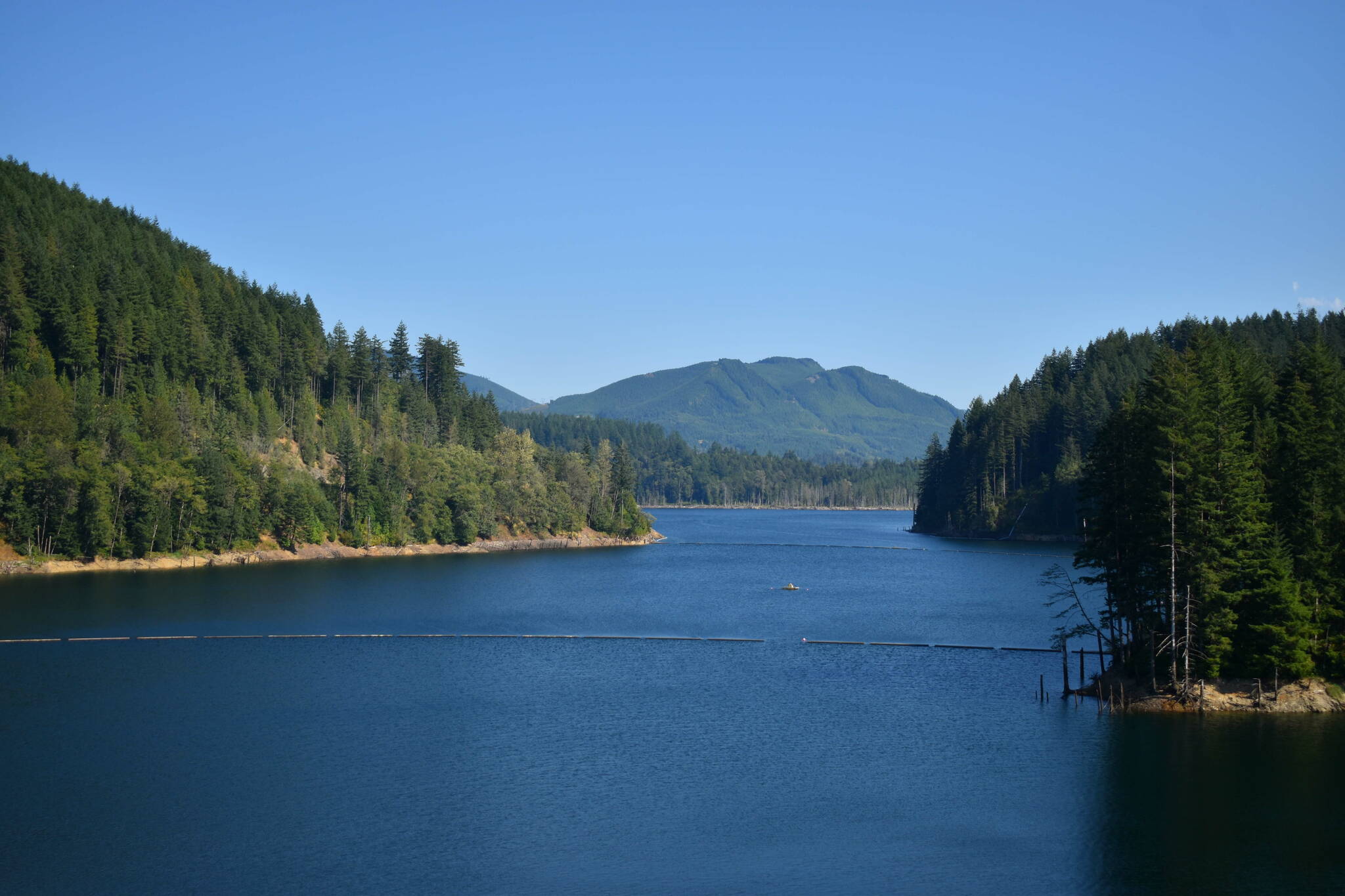Congress and President Joe Biden signed off on major bills last month giving the go-ahead to two big projects for salmon that swim and spawn in the Green/Duwamish River.
The major of the two is the 2022 Water Resources and Development Act (WRDA), part of the $858 billion National Defense Authorization Act, which Biden signed Dec. 23. Locally, that signature authorized the U.S. Army Corps of Engineers to formally begin planning the downstream fish passage facility at the Howard Hanson Dam on the Green River.
The project got a big $220 million boost in federal funding last year from the Federal Infrastructure Investment and Jobs Act, negotiated by U.S. Sen. Patty Murray and Rep. Kim Schrier, D-Sammamish, with the support of the Auburn-based Muckleshoot Tribe and other community partners.
First authorized in 1999, the dam project ground to a halt a decade ago due to out-of-control costs. But now the money is secured to finish the job, the Army Corps has been given a strict deadline to keep, and with Biden’s signature last month, it can all get started. The WRDA authorizes the $878.5 million of federal funding needed for the design process of the fish passage facility to start.
Construction on the fish passage is scheduled to start in 2026 or 2027 and be completed by 2030, according to the Army Corps. The dam is about 25 miles east of Kent.
The Green River Valley communities of Auburn, Kent, Tukwila and Renton depend on the earthen dam, built in 1961, to protect their lives, their jobs and an estimated $21.5 billion in property, according to the Army Corps.
Tacoma Water manages the Green River watershed and uses the river as the primary water supply for the city of Tacoma. Tacoma Water also supplies water to the city of Kent, the Covington Water District and the Lakehaven Water District in Federal Way. Kent’s primary water source is the Clark Springs watershed in Ravensdale along the Cedar River.
The Army Corps initially started to look at building a fish-passage tower in the late 1990s to be completed by 2007, according to a previous Kent Reporter article. But bids came in higher than the government estimated and were not awarded. Dollars also became tight because the Corps spent so much money on recovery efforts after Hurricane Katrina struck the Gulf Coast in 2005.
The Army Corps looked again in 2009 at building a fish passage facility with an estimated cost of $220 million. But that project never received funding and in 2011 was suspended because it exceeded costs, according to the Corps.
Meanwhile, the Army Corps will get another $2 million for an ongoing ecosystem restoration project along the Green/Duwamish River, thanks to local funding from the recently signed fiscal year 2023 Omnibus Appropriations Bill advocated for by U.S. Sen. Maria Cantwell.
It’s one of several regional projects included in the $1.7 trillion federal budget approved by Congress and Biden last month.
The restoration project will cover the entire ecosystem of the river, spanning the tidal estuaries to the spawning and wildlife habitat areas in the upper basin, Army Corps spokesperson Dallas Edwards said. It will focus on restoring habitat for fisheries stocks and threatened or endangered wildlife.
While this is a separate project, it “does kind of go hand-in-hand” with the work to allow fish passage at the Howard Hanson Dam, Edwards said. The fish passage will undo the barrier to the upper basin, while the restoration will improve the fish habitat there and on the way up, he explained.
Combined, both projects will help salmon, Edwards said.
When finished, the fish passage facility should reintroduce endangered salmon into their historical habitat, restoring food for wildlife like bears, eagles and endangered orcas, and helping fulfill the United States’ obligations to tribes like the Muckleshoot to provide access to fishing and hunting. The project could nearly double the spawning ground for several threatened fish species in the Green River.
The project will be built by the Army Corp, but it has been shaped with the help of many groups, including the Tribes.
In 2019, the National Oceanic and Atmospheric Administration (NOAA) issued a Biological Opinion requiring the Army Corps to finish the project and have the fish passage facility operational by the end of 2030. The Corps aims to finish designing the facility in around three years and begin construction in late 2026 or 2027, with an on-time completion by 2030, Edwards said.
Signature of the NOAA authorizes several other major projects in Washington, including:
• Creating a $50 million annual budget Puget Sound Recovery National Program office, tasked with cleaning up and protecting Puget Sound habitat, and creating a pilot program to reduce the risk of sea vessels striking Southern resident orcas.
• Authorizing more than $300 million for storm- and wastewater infrastructure projects across Washington, including in King and Pierce counties and specifically in Bonney Lake as well.
Steve Hunter of the Kent Reporter contributed to this article.
Talk to us
Please share your story tips by emailing editor@kentreporter.com.
To share your opinion for publication, submit a letter through our website https://www.kentreporter.com/submit-letter/. Include your name, address and daytime phone number. (We’ll only publish your name and hometown.) Please keep letters to 300 words or less.

